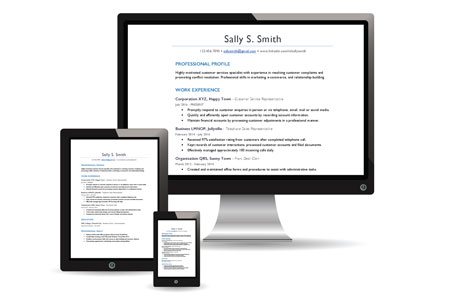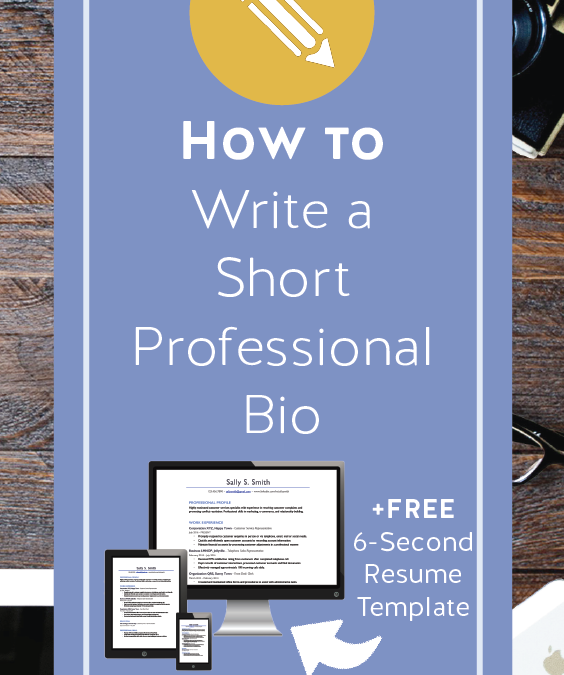Are you wondering how to write a short professional bio, for anything from an article to one of your social platforms?
If so, stick around, because here, you’ll learn how to write a bio that captivates your audience’s attention. And stay until the end for an example of a short professional bio I used for a guest podcast episode I did this week.
If we’ve never met before, I’m Heather Austin from ProfessorAustin.com and The Career Club on Facebook, and here, I share simple solutions to help you build a business or launch a career you love.
The 6-Second Resume

Your resume is one of the most important documents you’ll create in your lifetime. Get your FREE resume template to make yours stand out!
Short and to-the-point bios are becoming increasingly more important, especially in this world of information overload.
When someone reads your bio, they want to quickly learn who you are, what makes you unique, what you can to offer them, and where they can find out more about you.
Let’s jump in to how to write a short professional bio.
Step 1 – Identify Your Audience
Consider your audience before you craft your bio. Think about who will see your bio and tailor it to them.
For example, a bio on your website will be more in-depth and detailed compared to a bio on one of your social media platforms.
This means that you may have a few slightly different versions of your bio, and that’s okay.
Step 2 – Start with a Powerful First Sentence
You only have a few seconds to engage your audience, so your first sentence needs to be a good one.
Begin by stating who you are, what your audience can expect from you, and how you will help them solve a particular problem or pain point.
Step 3 – Tell a Compelling Story
To keep your audience around longer, tell a story about your greatest achievements and what makes you different.
Engage them with by sharing why you are unique or how you became an authority on your topic. Do your best to entice your audience to want to know more about you.
I call this the why.
Step 4 – Include a Call to Action
To get your audience to take the next step, you need to include some type of call to action to let them know where they can find out more about you.
This can be something as simple as sharing with your audience a link to your website, which social media platform you’re most active on, or a link to a free offer for them.
In your call to action, explain the benefit they’ll gain from taking action, such as a transformation or achievement.
Step 5 – Wrap it Up with Personality
List something personal that makes you more human and helps your audience relate to you.
Here’s an example of the bio I recently used for a popular podcast where I was a guest:
“Heather knows firsthand the overwhelm and frustration of the job search. For the past 13 years, she has taught thousands of students how to build their personal brand so that they can land their dream job and succeed in the marketplace.”
“As an academic dean, she had the privilege of hiring hundreds of faculty members. Under her direction, her team surpassed student retention and program growth goals.”
“Since then, Heather has started her own business where she works one-on-one with her clients helping them find a career that brings true happiness and fulfillment.”
“She is most active on her YouTube channel, where she publishes videos every week about career guidance and new business development.”
“In her downtime, this mom of 4 enjoys movie nights with her kids and group fitness classes at her local gym.”
Good Luck
If you follow these steps, your new professional bio is sure to impress!
The 6-Second Resume

Your resume is one of the most important documents you’ll create in your lifetime. Not only is used to help you sell yourself to a potential employer, but it is also used a personal brand tool. A well-written resume will give you an extra dose of confidence when it’s time to tell others about your talents, abilities, and expertise.
The 6 Second Resume
Enter your name and email address to gain instant access to your free resume template. Your next job is on its way!
